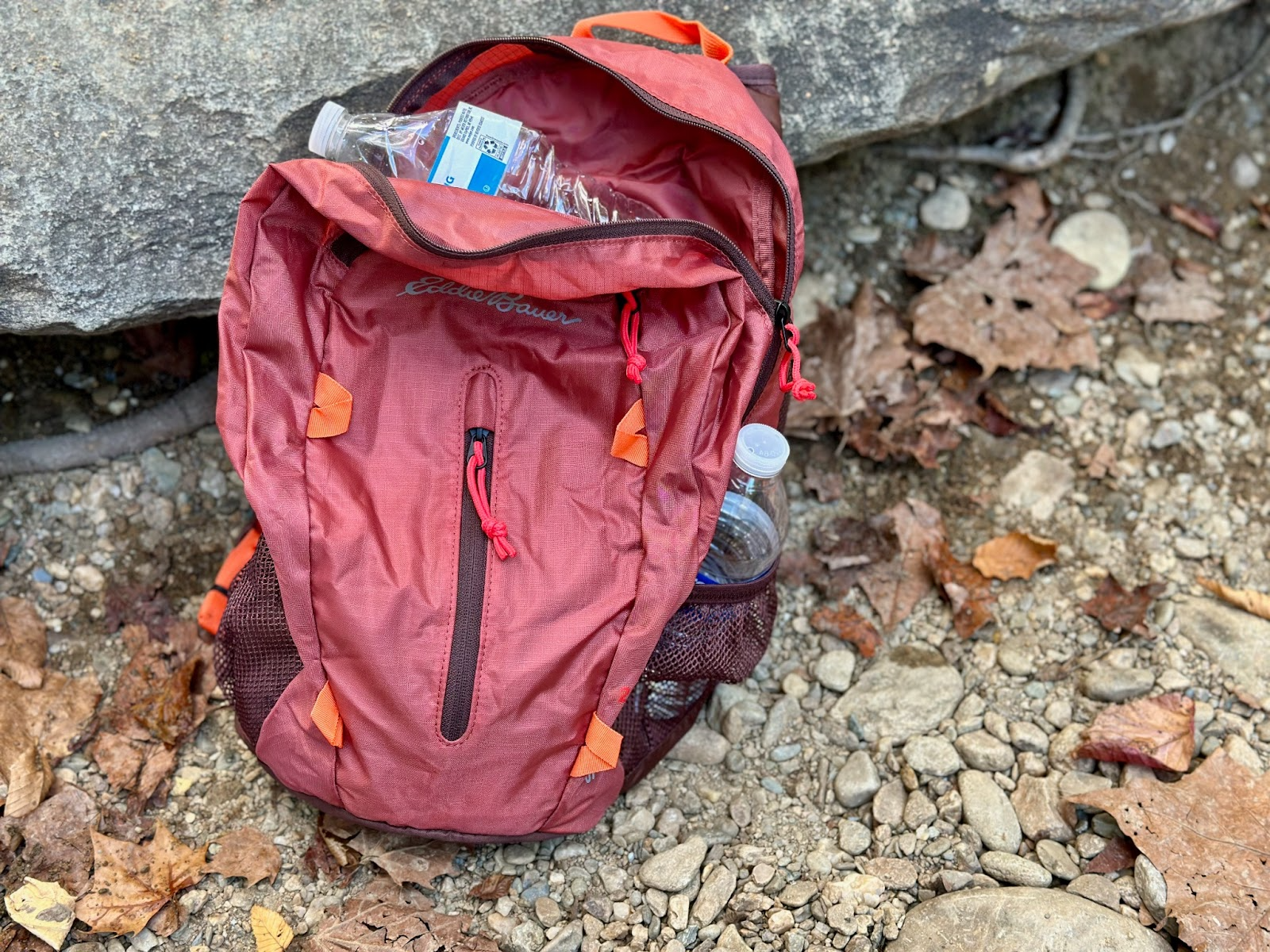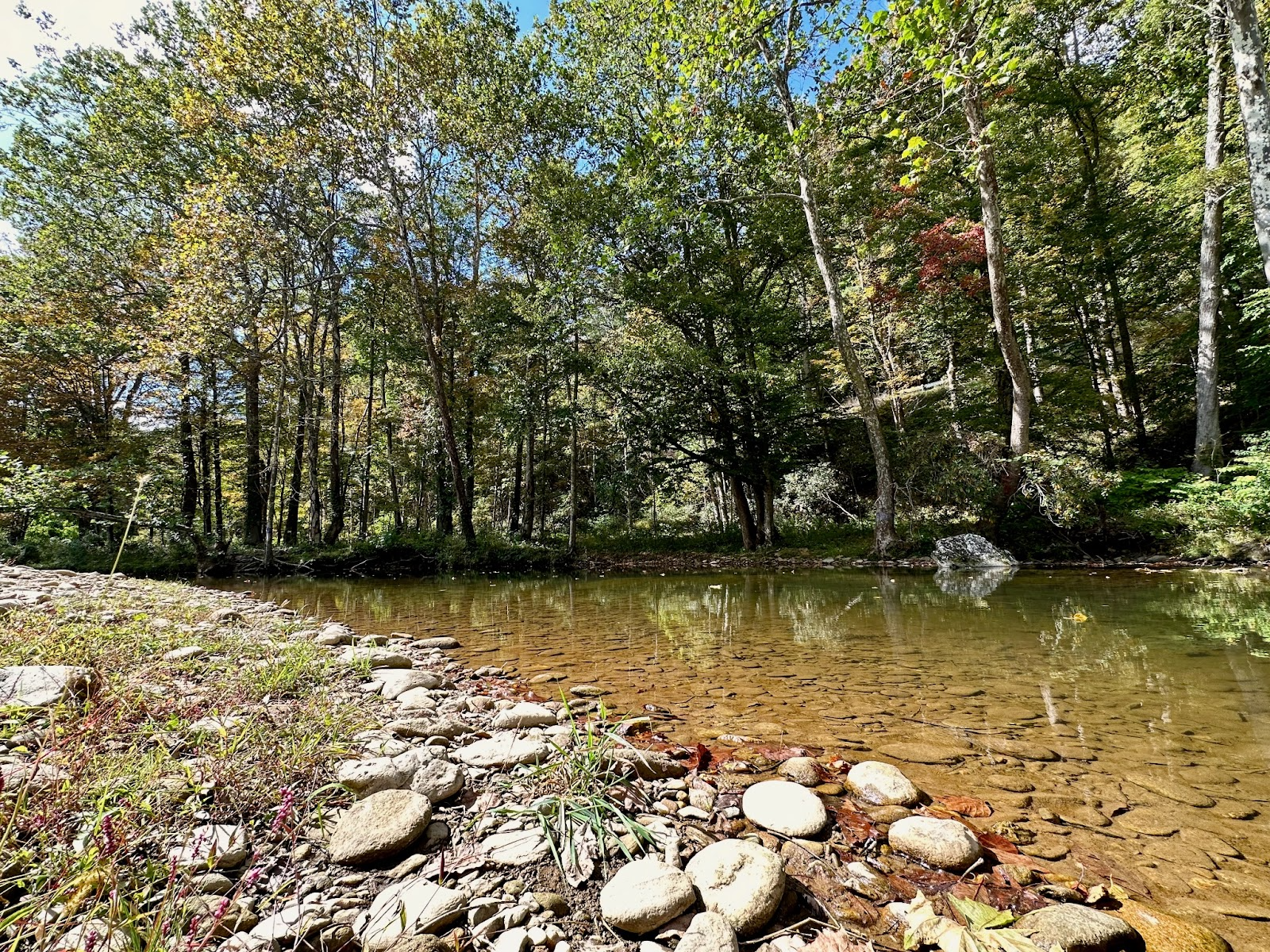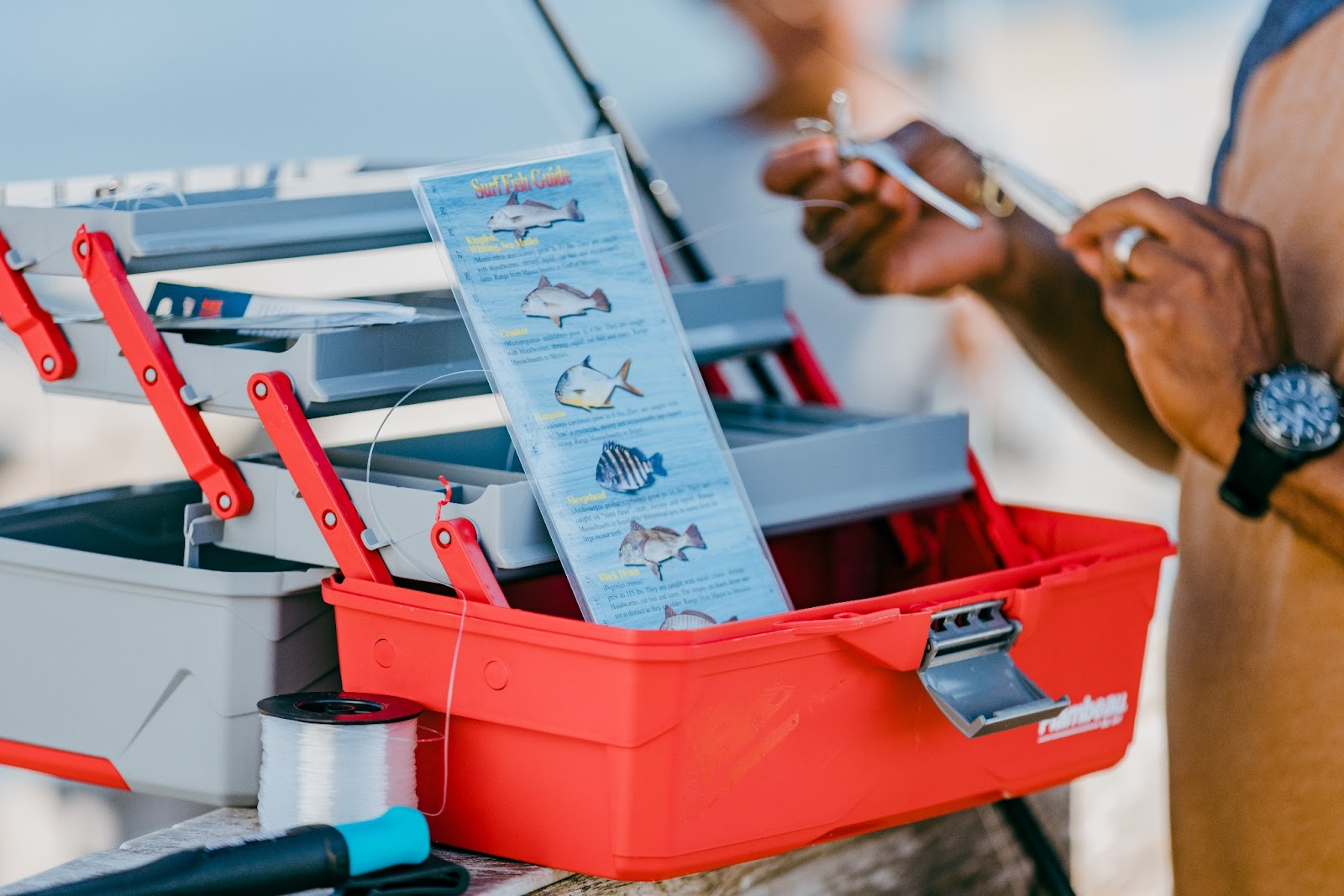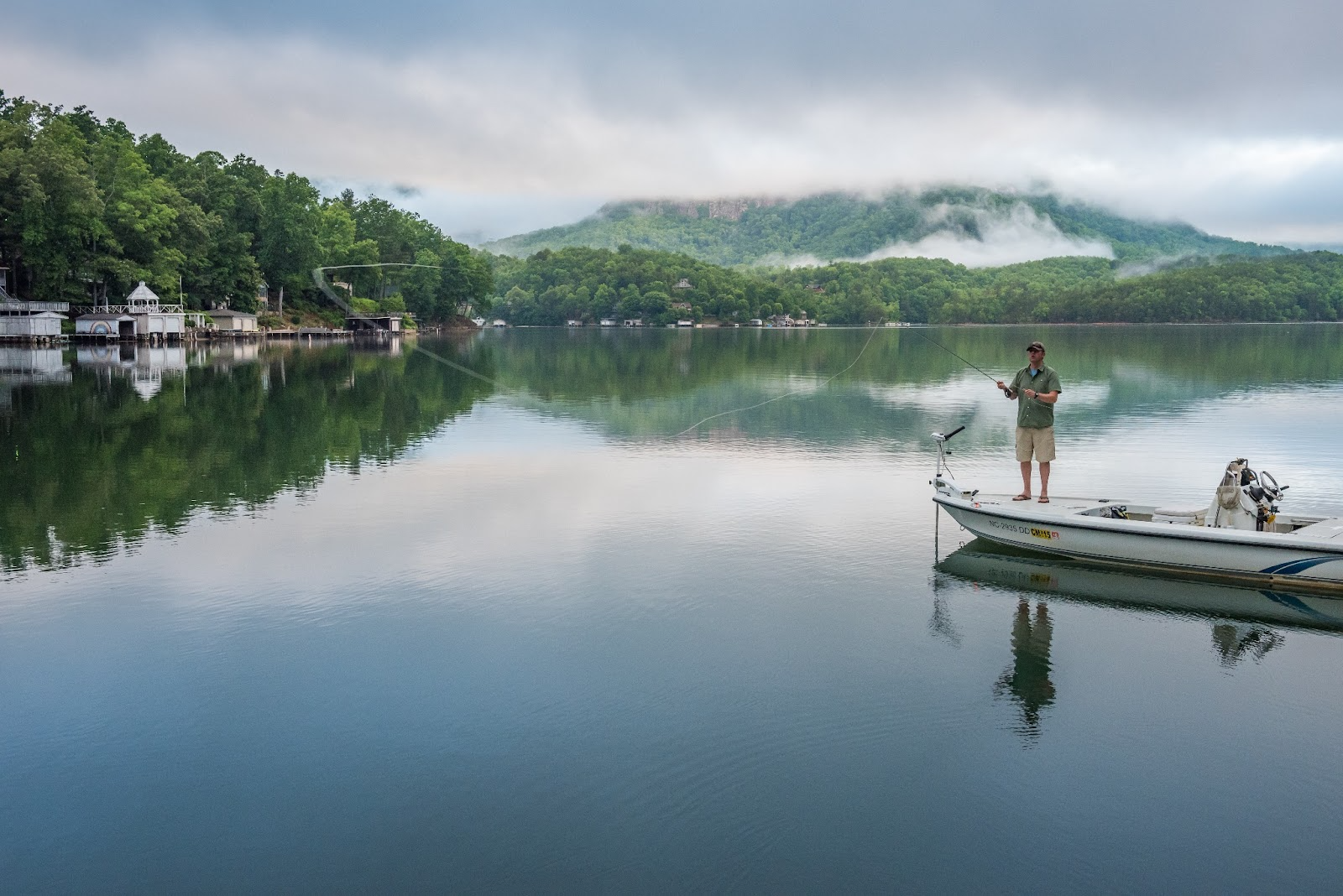Fishing is an experience that is as much about being immersed in the natural environment as it is about catching fish. This is why the concept of "Leave No Trace" that is often focused on hiking and camping activities also applies to anglers who are wading or boating in the water or trekking bankside for their catch.
When anglers are as mindful about their presence in nature as they are about the tackle selected for a day on the water, they can help preserve these places to enjoy for years to come.
In the heart of the pristine Blue Ridge Mountains in North Carolina at the Chetola Resort at Blowing Rock, the Orvis-endorsed lodge focuses as much on the Leave No Trace concepts for angler education as it does on teaching fly-fishing techniques.
“There is something very human about getting away from everything and being able to reconnect with the flora and fauna and most of importantly, yourself,” said Morgan Tarbutton, outdoor directorm and Orvis-endorsed fishing guide at the Chetola Resort. “If you see trash on the ground or see things that let you know that other people have been there, it dampens the special feeling that you get when you come across a place of absolute beauty. You feel like you're the first person to discover it. There's something that makes you feel the value of it and that makes you want to protect it.”

Fishing guide Morgan Tarbutton prepares for a day with clients from Chetola Resort in North Carolina. Photo by Anietra Hamper
Tarbutton is a passionate angler and fly-fishing instructor, and she is even more passionate about protecting what she jokingly calls her business partners, the fish in the rivers and streams where she takes her clients.
“Everybody wants to be able to pull fish out of the water. You don't want to see dead fish piling up on the sides. You don't want to see lines dangling out of trees. You don't want to see old tackle sitting around,” said Tarbutton. “It can be a little disheartening when you do run across manmade issues when you've gone out there to experience the opposite.”
When it comes to fishing, things like trash, chemicals, line and plastics that are left behind do not just ruin the aesthetics of the environment, but they can cause harm to the waterways, ecosystems and the fish that depend on them.
Though the Leave No Trace concepts apply to anyone who enjoys the outdoors there are several that apply more specifically to anglers. While these seem like simple principles, more often than not they require a conscious effort to follow which is why guides, resorts and even state-wide campaigns are focused on helping anglers minimize their environmental impact while reconnecting with the wild.

Fly fishing angler on Curtis Creek. Provided by VisitNC.com
Plan and prepare
By planning ahead, anglers have an opportunity to reduce their impact on the environment long before arriving at the water.
“North Carolina has so many amazing waters, but it is important that as anglers, we do our homework before showing up to a stream,” said Jake Rash, coldwater research coordinator for the North Carolina Wildlife Resources Commission. “That homework includes knowing all of the regulations for what types of bait or lures you can use, if you can keep fish, and the boundaries on a water where a regulation applies, so that you can get to the water and fish without any confusion.”
Anglers can also prepare by going online ahead of time to purchase a valid fishing license, review the fishing locations, species and permit considerations for the state they plan to visit.

Packing trash out from a fishing excursion. Photo by Anietra Hamper
Pack it in, pack it out
Though this Leave No Trace principle is self-explanatory, anglers are notorious for leaving things behind from tackle to empty bait containers and trash. Anglers should plan for how to take out everything that they take in including food waste, trimmed tippets, broken gear and other waste.
Long days on the water usually means arriving with coolers filled with drinks, lunch, and snacks. Bringing a trash bag or placing all trash back into the cooler to take home is easy to do.
Bait containers are another consideration. Containers should be sealed while in use to prevent wildlife from accessing potentially harmful food sources. When they are empty, bait containers should be added to the trash bag to take home for proper disposal.

Fishing line and fly tangled in a tree. Photo by Anietra Hamper
Practice line managementIt’s almost inevitable during fishing sessions to get caught in trees, especially in small trout streams that are popular among fly fishing anglers. Practicing good line management to avoid snagging trees and objects that require breaking the line is paramount to an angler’s responsibility when it comes to Leave No Trace.
Monofilament fishing line can be lethal to wildlife if they become entangled or swallow it. Learning proper casting to avoid snags, knowing how to cut your line when caught on rocks and disposing of all fishing line and hooks by using monofilament tubes if they are available can help protect birds, fish, and other wildlife.
“The most common is birds that die from eating the flies or hooks,” said Tarbutton. “Best case scenario is an invisible line that may or may not get something in it. The worst-case scenario is an artificial insect looking like food.”
How can anglers catch more fish and fewer trees? Practice with casting and good line management. Tarbutton says one of the most effective strategies is having someone take a video of you casting your line and watching it to see where you can improve.
“When you're able to watch yourself in a third person perspective you can see that there's going to be different types of casts that you should have in your armada to deal with various scenarios,” said Tarbutton.

Guide Morgan Tarbutton teaches author Anietra Hamper to use the PractiCaster. Photo by Dustin Coffey
Casting clinics are another way to minimize line tangles in trees and expose anglers to various types of scenarios and space confinements on streams. Qualified instruction along with tools like a PractiCaster is one method to eliminate tangles before they ever happen.
“Practicing the type of casting you're going to do before you even get up to the water can limit at least 60% of the trouble you would have run into if you just went out there and started trying to catch fish,” said Tarbutton.

Author Anietra Hamper getting a quick photo with a rainbow trout before release. Photo by Dustin Coffey
Practice safe fish handling While every angler wants that photo with a prized catch it is important to make the health of the fish a priority which means being mindful of safe fish handling. The fish are sensitive to added stressors like being out of the water, especially after a fight and other pressures they already face like warming water temperatures.
There are several ways anglers can minimize the stress on the fish and still capture that great photo. First, use a rubber net to carefully bring in the fish after the fight to give it a chance to settle. Next, it is important to make sure anyone handling the fish wets their hands first to protect the mucus membrane that can easily rub off with contact. Then, be mindful of how you hold the fish.
“Most people don't realize that between the two pectoral fins, right up front behind the head, is where their heart sits, and they squeeze right there to try to control the fish from getting out of their grip,” said Tarbutton referring to trout. “It would be like me coming up after you've run a marathon and putting one of those giant rubber bands around your ribcage. It doesn't allow them to breathe.”
Using your hands as a cradle to gently cup the fish in the front while holding it at the base of the tail over the net is the best way to handle it. Tarbutton suggests a good rule for anglers to follow is to not keep a fish out of the water for more than seven seconds.
Finally, it is important to let the fish recuperate in the net submerged in the water before releasing it.

Tranquil stream in the Blue Ridge Mountains. Photo by Anietra Hamper
Leave it as you find itThe environment that anglers enjoy while fishing should be the same when they leave. This means leaving things like rocks, trees, brush, and any part of the natural environment in-tact. While these natural elements around the river or waterway might impede a cast, they are also where bugs hide that become fish food so disturbing any part of it can have a ripple effect on the environment and wildlife.
While wading in the water anglers should limit fast or dramatic movements to lessen silt distribution. The idea with this principle is to encourage anglers to carefully step into nature to enjoy it but not alter it in any way. Anglers who want to access public and private waters should be aware of state and local regulations and look for any posted signage that protects fishing access.
“Many trout fishing opportunities in North Carolina are on private lands, so as anglers, it is important that we always respect these generous landowners and their property. Simple things like removing trash or not blocking gates can go a long way in helping to maintain these angling opportunities into the future,” said Rash.
One thing that anglers might not consider with the leave it as you find principle is noise pollution.
“People don't want to go out there and hear blaring radios. You want to hear the birds and you want to hear the water. Sound pollution really does affect people. It's amazing how much you can reset when you don't have all that extra white noise to mess up your thinking, said Tarbutton.
The noise pollution not only impacts the overall experience for anglers but also the fish that are sensitive to the commotion and vibrations in the water.

A young girl recycles fishing gear into a bin. Photo by VisitNC.com
Putting Leave No Trace concepts into practice
The Leave No Trace principles only matter if anglers and others enjoying the outdoors put them into practice which is sometimes easier said than done.
North Carolina has implemented a statewide initiative, called Outdoor North Carolina Leave No Trace, to help anglers and all visitors have a better experience enjoying the outdoors by enabling them to play an active role in protecting it.
“When visiting outdoor spaces, there will be inevitable impacts. The purpose of the Outdoor NC Leave No Trace program is to help educate visitors on the avoidable impacts to North Carolina’s unique environment,” said Amanda Baker, partner marketing manager for Visit North Carolina.
The Outdoor North Carolina initiative launched in 2020 from several state partnerships during a time when people were looking for things to do outside due to the limitations of COVID-19. It evolved into an opportunity to educate millions of visitors using North Carolina’s diverse outdoor spaces to enjoy new experiences and help protect it with Leave No Trace principles.

Angler tackle box. Provided by VisitNC.com
Fishing is a large part of outdoor interest in the state’s saltwater, freshwater inland and coastal regions. According to the North Carolina Wildlife Resources Commission, 57 species of the 234 freshwater fish species known in North Carolina, are state or federally listed as endangered, threatened, or of special concern. Most of the species can only survive in the water suitable for their specific form and function meaning any alteration to their aquatic environment is a potential threat.
This is why Outdoor North Carolina’s Leave No Trace principles are especially important for anglers.
“Following the Outdoor NC Leave No Trace principles can help protect the environment in which these native fish populations live, help to avoid spreading non-native plants, animals and disease that could harm native fish and keep North Carolina’s waters open for fishing,” said Baker.
As part of this initiative Visit North Carolina is asking anglers and all visitors to take a pledge committing to the Leave No Trace principles while enjoying the state's outdoor spaces, including fishing on its diverse waterways.
“When inviting visitors to take the pledge we have asked them to join us in a movement to protect the places they enjoy visiting. Educating visitors is the first step by providing them with simple tips to reduce their impact and in turn sharing with us that they are armed with knowledge and have committed to also care for the places they will be visiting,” said Baker.
Leading by example is another way to have an impact with places like Chetola Resort making that commitment with every angler who comes to enjoy a bucket list experience on the mountain waters.
“It's easy to get people to care once you get them here, and you expose them,” said Tarbutton. “Some people can fully appreciate what's already here. But for people who are just rolling in, maybe they have never been here before, I've found that education usually is the key.”

An angler fly fishing on one of North Carolina’s lakes. Provided by VisitNC.com
Every effort matters
Protecting pristine places like the shallow streams in the Blue Ridge Mountains happens through commitments made by individual anglers over time.
When anglers practice the Leave No Trace principles, they’re not just protecting the fish, the wildlife, and the environment, but they are also protecting the full sensory experience that comes with immersing in a wild place.
“North Carolina is a natural wonder,” said Baker. “Its landscape consists of four main eco-regions, 121 species of mammals, more than 475 wild bird species, the freshwater loving Eastern Hellbender, and five species of federally endangered sea turtles. When we visit these places, we become a part of those ecosystems,” said Baker.
Protecting the natural environment means protecting the experiences that come with it for generations to come like the peacefulness of being surrounded by the dense forest; the integrity of the pine fragrance in the air; the pattern of the sunlight that peeks through the branches of towering trees illuminating the native ferns on the forest floor and the rhythmic sensation of the current flowing over wading boots that invites anglers to become one with their environment for just that moment in time.
